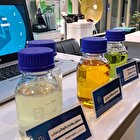Iran Aims to Use Satellite, Radar Images to Monitor Oil Pollution

The use of satellite and radar images (SAR) to monitor oil pollution, gas and oil transmission lines, and sensitive environmental areas, the use of air and space systems in exploration, surveillance, and monitoring services, and the possibility of using balloons and airships to cover border points and remote areas were among the subjects discussed in the meeting.
The development of data analysis algorithms, modeling, and the use of artificial intelligence in the field of energy, and joint cooperation in the use of laboratory and industrial infrastructure, specially in projects related to special fuels and new technologies, were other topics of discussion between the two sides in the joint meeting.
At the end of the meeting, the two sides emphasized the need to develop a joint roadmap, form a specialized working group, and launch pilot projects in agreed areas.
In a relevant development in April, Iranian technologists at a knowledge-based company had succeeded in finding a solution for managing and cleaning up oil pollution biologically by identifying and purifying eight bacterial strains and registering them in the gene bank.
The knowledge-based company started its research in the field of recycling wastewater and waste from drilling rig activities and, by achieving waste management technology and cleaning up oil pollution biologically, succeeded in purifying eight bacterial strains and registering them in the gene bank.
These technologists of the Iranian firm studied the most optimal conditions for cultivating these strains for inoculation in the main field by conducting research and experiments, and ultimately, two strains of these bacteria were produced and industrially cultivated and propagated as the best strains for degrading petroleum hydrocarbons.
These bacterial strains consume petroleum hydrocarbons, all of which are native to the region and have been isolated for the first time.
Essentially, all bacteria form biofilms—vast communities of the microorganisms that are held together by slimy extracellular substances and, in the case of Alca, that stick to the surfaces of oil droplets. Alca’s biofilms deform oil drops and eat the hydrocarbons, or they can sometimes transform the drops into larger aggregate structures that can then sink to the seafloor.
4155/v





















